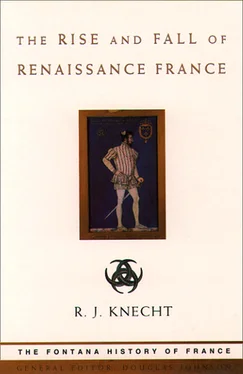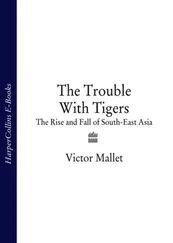In Italy, Francis’s diplomacy was less successful. The Venetians agreed to help him militarily in return for assistance against the emperor, and the Genoese reverted to their allegiance to France in exchange for local concessions, but other powers proved less co-operative. The Swiss, in particular, had not forgotten Louis XII’s refusal to ratify the Treaty of Dijon; nor were they prepared to surrender territories in Lombardy which Sforza had ceded to them or the pension they received from him in return for their armed protection. Sforza was also supported by Ferdinand of Aragon and Pope Leo X. Ferdinand did not wish to see any change in the Italian situation which might endanger his hold on Naples, while Leo was anxious to avoid a repetition of the events of 1494 which had led to the overthrow of his Medici kinsmen in Florence. He was also keen to retain the towns of Parma and Piacenza which Sforza had ceded to him. As for the emperor, being at war with the Venetians, he was not prepared to treat with their ally the king of France.
The most urgent military task facing Francis I in 1515 was to raise enough infantry. France had the largest standing army in Christendom, but it consisted almost entirely of cavalry. By the early sixteenth century wars could no longer be won by cavalry alone, as had been demonstrated by the victories of the Swiss infantry over the Burgundians in the late fifteenth century. But infantry of good fighting quality was not easily raised. The king could rely to some extent on native volunteers, called aventuriers , but the best infantry were foreign mercenaries. Until 1510, France had been able to hire the Swiss, but, as they were now employed by the enemy, he had to look elsewhere. In 1515 he raised 23,000 German landsknechts, who were less disciplined than the Swiss.
Mercenaries made heavy demands on the royal purse. The main source of royal revenue was the taille which fell on commoners, especially the peasantry. The king also asked his subjects for a contribution of 2,900,000 livres in celebration of his accession, but this took a long time to collect. Francis thus had to resort to various expedients: his gold plate was melted down, forced loans were exacted from the ‘good towns’, financial officials advanced loans to the crown, and parts of the royal domain were mortgaged. By such means the king managed to create a sizeable army, which in April began to assemble near Lyon and Grenoble. It consisted of about 6000 cavalry and 31,500 infantry, but its pride was the artillery, comprising some sixty large cannon and many lighter pieces.
On 26 June, Francis informed the ‘good towns’ of his imminent departure for Italy and of his mother’s regency in his absence. At the same time he obtained from his wife Claude formal cession of her rights to Milan. Next day the king left Amboise for Lyon, where a spectacular entry awaited him on 12 July. Francis spent nearly three weeks there putting the finishing touches to his invasion plan. On 15 July he appointed his mother as regent, but her powers were limited as the chancellor accompanied the king to Italy, taking the Great seal with him. The enemy, meanwhile, prepared to bar the king’s way. They assumed that he would cross the Alps by way of either the Mont Genèvre or Mont Cenis pass. On 17 July the duke of Milan, the pope, the king of Aragon and the emperor signed a league for the defence of Italy. As the Swiss had no cavalry, the pope sent 1500 horse under Prospero Colonna to Piedmont. Francis had either to fight his way past the Swiss or by-pass them. He decided to use the Col de Larche, a pass frequented only by peasants, and sent a force of sappers ahead of the army to bridge torrents and remove obstacles. On 11 August the vanguard under Bourbon crossed the mountains and, entering the plain of Piedmont, surprised and captured the papal commander Colonna and his men at Villafranca. The Swiss thus lost their cavalry support.
The king of France, in the meantime, set off with the rest of the army. He found the crossing of the Alps arduous. The descent into Italy was so precipitous that many horses and mules fell into ravines, while cannon had to be dismantled and lowered on ropes. On reaching the plain, Francis advanced rapidly eastward. The Swiss, meanwhile, fell back to Lake Maggiore and Francis agreed to negotiate with them through his uncle, René of Savoy. A treaty was drafted, but a new round of talks began at Gallarate. The king, meanwhile, drew closer to Milan, hoping to effect a junction with the Venetian army under d’Alviano. On 9 September, Francis received the text of a treaty signed at Gallarate. The Swiss agreed to give up their Milanese territories, except Bellinzona, in return for a subsidy of one million gold écus of which 150,000 were to be paid in cash immediately. Sforza was to surrender Milan in exchange for the duchy of Nemours. Francis was to be allowed to raise troops in Switzerland in return for a subsidy to each canton. He immediately obtained the sum of 150,000 écus from his entourage and sent it to Gallarate. Meanwhile, he encamped at Marignano (now Melegnano), a village situated between Milan and Pavia.
However, not all the Swiss wanted peace. While the men of Berne, Fribourg and Solothurn were keen to go home, those from other cantons refused to give up the fruits of their recent victories without a fight. They were encouraged by Cardinal Schiner, a bitter enemy of France, who made a stirring speech in Milan on 13 September. A minor skirmish with French scouts outside the city precipitated an armed decision. About midday the Swiss, most of them barefoot, hatless and without armour, swarmed out of the city. Their artillery consisted of only eight small guns; Schiner and about 200 papal horse followed in the rear. Hoping to catch the French by surprise, the Swiss marched briskly and in silence, but inevitably they threw up a cloud of dust.
A party of French sappers, spotting the cloud, alerted the French camp, which was soon ready for action. As usual, the Swiss advanced in an echelon of three compact squares of 7000 or 8000 pikemen each. The first crossed a ditch protecting the French guns and scattered the infantry, leaving the gunners isolated. The landsknechts then moved forward, and two gigantic squares of pikemen collided. Once again the Swiss broke through. A counterattack by the French cavalry was thrown back. The fighting continued until midnight, when the moon vanished, plunging the field into complete obscurity. The two armies then separated, the French responding to shrill trumpet calls and the Swiss to the deep bellowing of their war-horns. Francis used the interval to redeploy his army. Duprat, meanwhile, wrote to Lautrec, instructing him not to hand over the money to the Swiss at Gallarate. When battle was resumed at dawn, the Swiss adapted their tactics to the new French formation. Instead of advancing in echelon, they engaged the entire French line. Braving the fire of the French guns, they forced back the landsknechts in the centre, but were themselves driven back by Francis and the gendarmerie. On the left, however, the Swiss overwhelmed the French guns, scattered the infantry and lunged into the landsknechts. The French left was about to collapse when the Venetian cavalry arrived, shouting: ‘San Marco! San Marco!’ Their spirits revived, the French mounted a counterattack. By 11 AM the Swiss had been routed.
Marshal Trivulzio, a veteran of seventeen battles, described Marignano as a ‘battle of giants’ beside which the others were but ‘children’s games’. The gravediggers reported burying 16,500 corpses, but the exact number of French and Swiss losses is not known. Many French noblemen lost their lives; their bodies were embalmed and sent back to their estates for burial. Reviewing the battle, Francis singled out for praise Galiot de Genouillac, whose guns had slowed down the Swiss attack, and Pierre du Terrail, seigneur de Bayard. The king allegedly crowned his victory by having himself knighted by Bayard on the battlefield as a tribute to his bravery.
Читать дальше












